|
St Aidan's, Bamburgh
On 7 September 1838, Grace Darling, alongside her father who was the local lighthouse keeper, rescued nine survivors from the wrecked SS Forfarshire off the Northumberland coast. A memorial and stained glass in her memory can be found at St Aidan’s Church. A place of worship was founded on this site in 635 by St Aidan; the site of his death is marked by a shrine within the present church, which dates from the end of the 12th century. Aidan was called from Iona by King Oswald to establish Christianity in his newly united kingdom of Northumbria. No trace of that wooden building can now be seen, other than perhaps a beam in the Baptistry. Tradition has it that this is the beam that Aidan was leaning against when he died in AD 652, it is said to have miraculously survived two fires. The building that is now seen dates from the end of the 12th century. The chancel, said to be the second longest in the country at 60 feet, was added in 1230. In 1895 a reredos was added. Created in Caen stone, it depicts northern saints of the 7th and 8th centuries. The church works closely with the Grace Darling Museum - just across the road. Both in the church and in the churchyard memorials to the Victorian heroine can be found. The north aisle contains an effigy of Grace from 1844 by Charles Raymond Smith. This formed part of the original monument to her in the churchyard, but was later replaced with a replica due to deterioration of the stonework. The churchyard memorial, from 1844, is placed so that it can be seen by passing ships, and is by Anthony Salvin and Charles Raymond Smith.
0 Comments
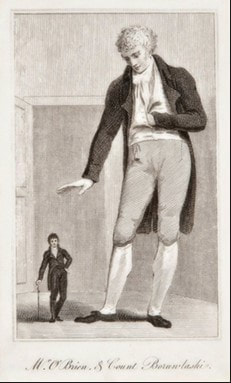 This article about the LITTLE COUNT was sent to me - I thought it might interest others. From the Geordie Diary Facebook page: 5 September 1837 ‘Died, at Bank Cottage, near Durham, in the 99th year of his age, Count Joseph Boruwlaski, the celebrated Polish dwarf, a native of the province of Pokucia, in Polish Russia. This extraordinary person, though only thirty-six inches in height, was perfectly symmetrical in figure, and he enjoyed excellent health to a very late period in life. His lively genius and engaging manners caused him to be much noticed when he arrived in this country, and having been seen by some of the prebendaries of Durham, he was prevailed upon by that body to take up his abode in the above cottage, they engaging to allow him a handsome income, which he enjoyed up to his death.’ There is an image of an engraving of our very own Polish Count standing next to Patrick Cotter O’Brien, who was known as the Bristol Giant or the Irish Giant. Patrick was approximately 8’ 1”. (He was the tallest person alive at that time.) Estimates of Joseph Boruwlaski’s height vary; one of his friends believed he continued to grow as an adult, even into old age. Whatever the truth, it is likely that he would have been over 36” tall by the time of any meeting shown in the drawing so the difference in their heights as shown is more than a tad exaggerated. Causey Arch and the Tanfield Railway
Starting at the Causey Arch Picnic Area, this delightful walk follows the line of the Tanfield Railway, along the picturesque valley of the Causey Burn, before crossing the oldest surviving railway bridge in the world along the course of an old waggonway which was used to transport coal to the river. The Railway was opened in 1725, and is now the oldest operating railway in the world. It was constructed to take coal from the pits around Stanley and Marley Hill to the River Tyne. Originally, waggons, or more correctly, chaldrons, filled with coal, were hauled along a wooden track by horses before being replaced by metal rails and static winding engines in the early 1830s, and by locomotives in 1881. (A chaldron was an English measure of dry volume, mostly used for coal; the word itself is an obsolete spelling of cauldron.) Most of the line was closed in 1970 but it is now run by a group of steam enthusiasts. Causey Arch is the oldest surviving single arch railway bridge in the world and spans the gorge of Causey Burn. Constructed in 1725-6 to provide a link between collieries at Tanfield and the main waggonway to the River Tyne. The original design of a wooden track was crude, but nevertheless, effective. It was commissioned by a powerful group of local coal owners known as the “Grand Allies.” The Arch was designed by Ralph Wood, a local Stonemason, has a span of 100 feet and stands 80 feet above the valley floor. Tradition has it that Wood was very apprehensive about an earlier timber bridge which had collapsed!! Fearing that a similar fate awaited the stone structure, he leapt to his death from the top of the Arch. On the western side there was a Toll House, where lines to other pits branched off, the remains of which are still in evidence. There is ample parking at the Causey Arch Picnic Area; or arrival by public transport can be achieved via Stanley. Great care is required at all times: the train tracks are to be crossed three times; there are tree roots, steep sections and tall steps to be negotiated, but on a lovely sunny day, it is a magical walk – walking back in time itself. Enjoy With a lot of help from the internet, I have been doing research into local heroes. Here is an offering about Henry Hotspur.
Henry Percy, "Hotspur", is one of Shakespeare’s best-known characters. In Henry IV, Part I, Percy is portrayed as the same age as his rival, Prince Hal. In fact he was 23 years older than Prince Hal, the future Henry V who was a youth of 16 at the date of the Battle of Shrewsbury. The name of one of England's football clubs, Tottenham Hotspur Football Club, acknowledges Henry Percy, whose descendants owned land in the neighbourhood of the club's first ground in the Tottenham Marshes. Henry Percy was born 20 May 1364 at either Alnwick Castle or Warkworth Castle in Northumberland. He was the eldest son of Henry Percy, 1 st Earl of Northumberland and Margaret Neville, daughter of Ralph de Neville, 2nd Lord Neville of Raby, and Alice de Audley. (Ralph Neville led the victorious English army at the Battle of Neville’s Cross.) He was knighted by Edward III in April 1377 together with the future Richard II and Henry IV. He was appointed Warden of the East March either on 30 July 1384 or in May 1385, ] and in 1385 accompanied Richard II on an expedition into Scotland. As a tribute to his speed in advance and readiness to attack on the Scottish borders, the Scots bestowed on him the name "Haatspore". In April 1386, he was sent to France to reinforce the garrison at Calais and led raids into Picardy. In appreciation of these military endeavours he was made a Knight of the Garter in 1388. Reappointed as Warden of the East March, he commanded the English forces against James Douglas, 2nd Earl of Douglas, at the Battle of Otterburn on 10 August 1388, where he was captured, but soon ransomed for a fee of 7000 marks. In spite of the favour that Henry IV showed the Percys in many respects, they became increasingly discontented with him. Among their grievances were:
Spurred on by these grievances, the Percys rebelled in the summer of 1403 and took up arms against the king. It is thought that the Percys were in collusion with Owain Glyndwr, in his campaigns against the English. The circumstances of Percy's death differ in accounts. The chronicler Thomas Walsingham stated, in his Historia Anglicana that "while he led his men in the fight rashly penetrating the enemy host, [Hotspur] was unexpectedly cut down, by whose hand is not known". Another account states that Percy was struck in the face by an arrow when he opened his vizor for a better view. The legend that he was killed by the Prince of Wales seems to have been given currency by Shakespeare writing at the end of the following century. |
Archives
April 2021
Categories
All
|

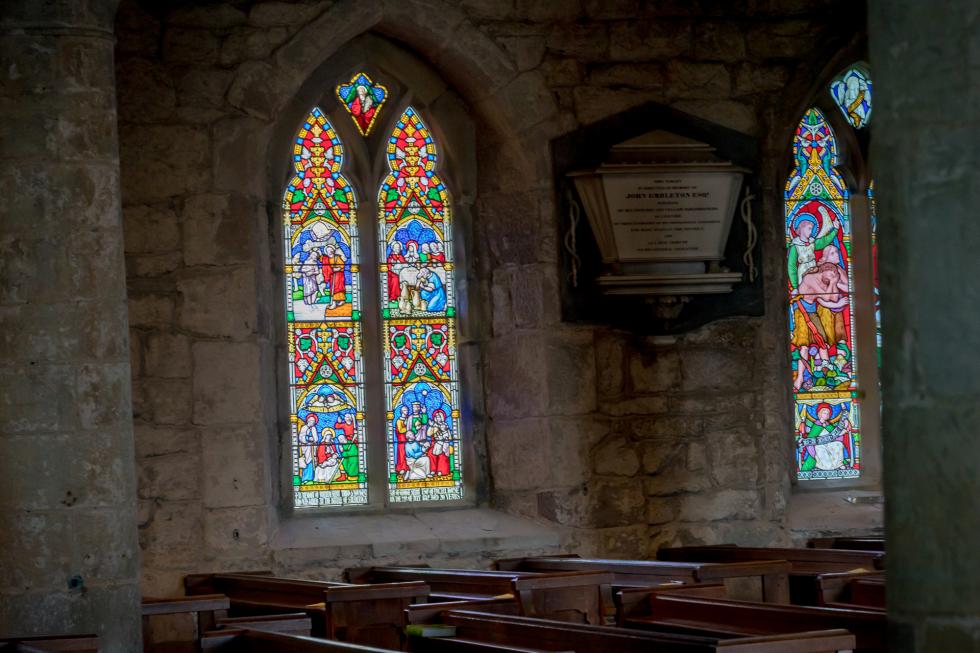
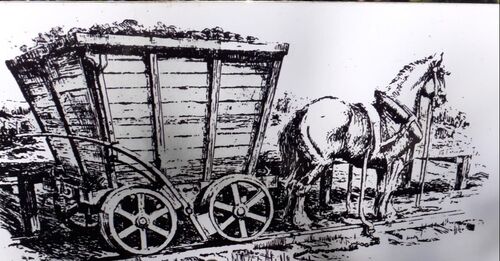
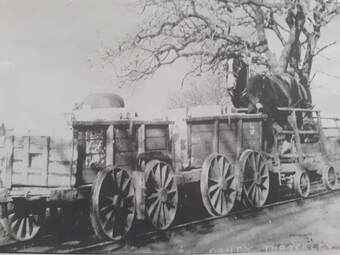
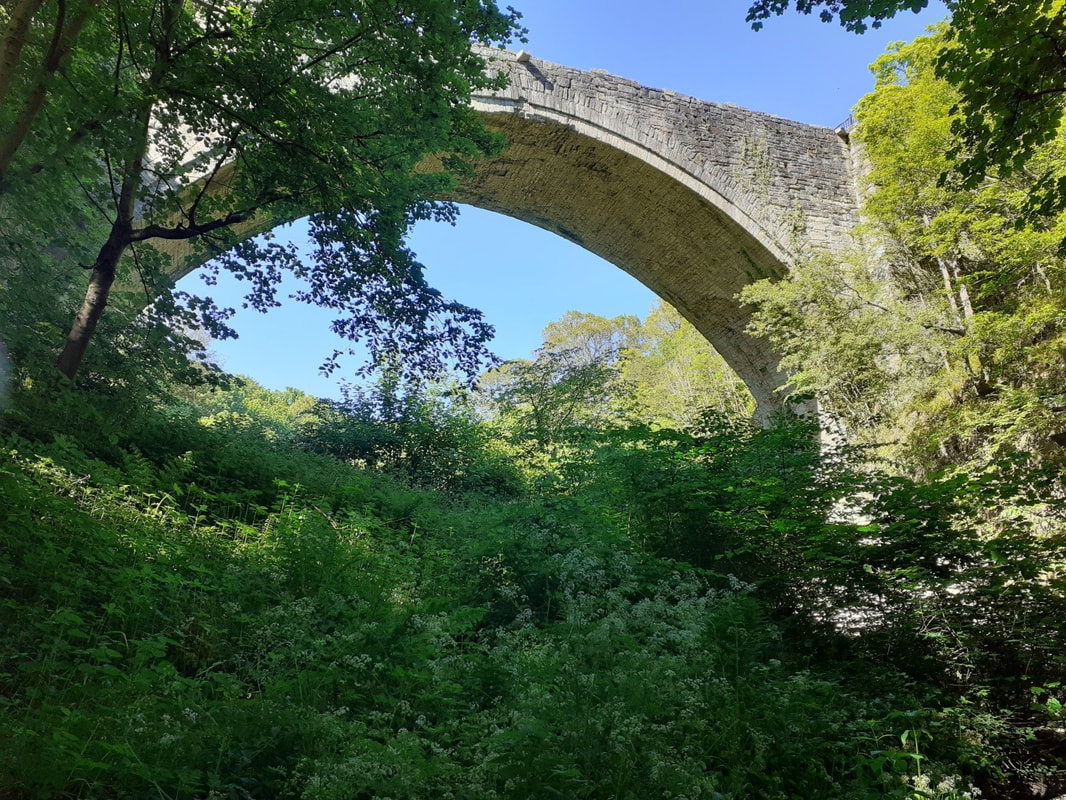
 RSS Feed
RSS Feed
